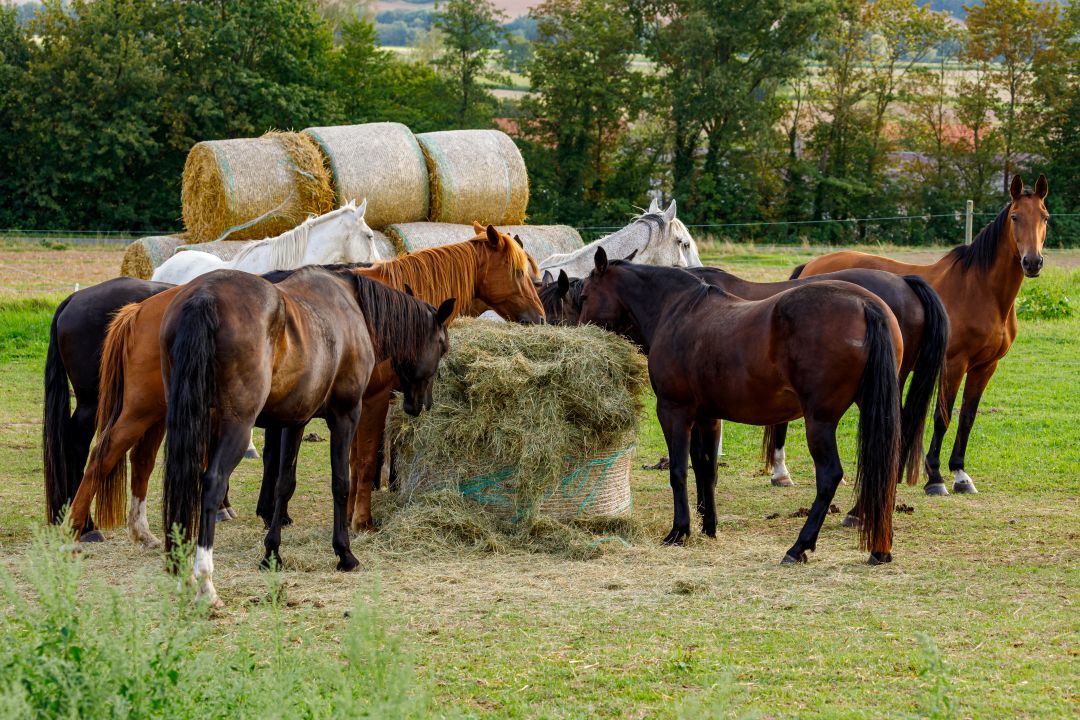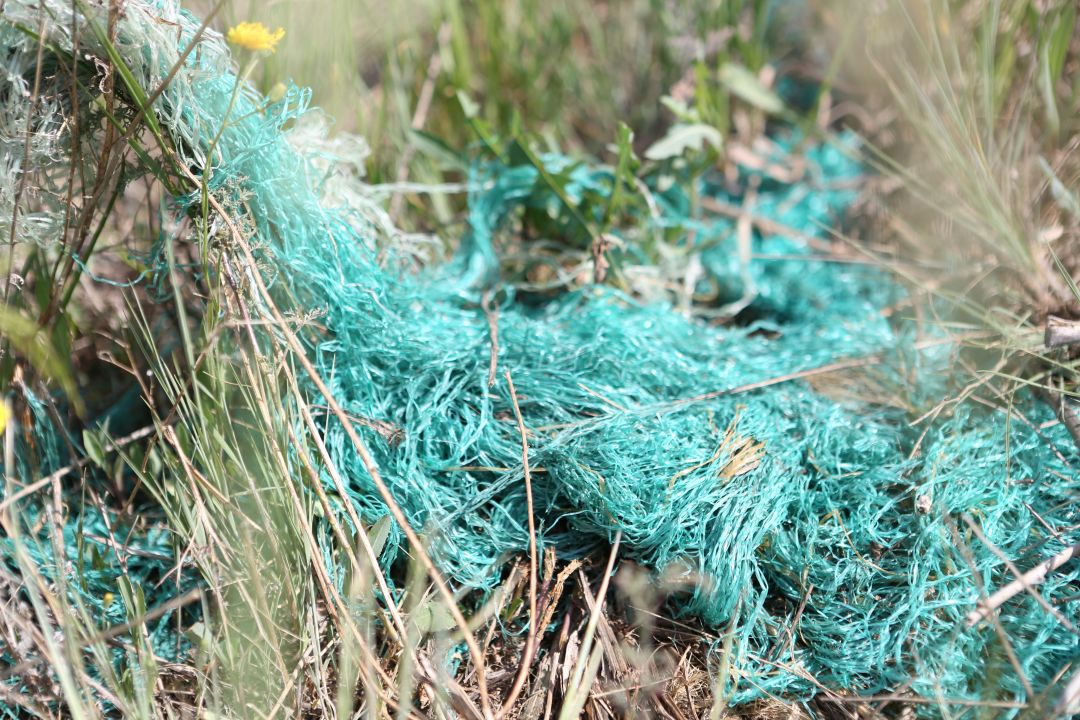
Hard to stomach: veterinarian alerts horse owners about dangers of bale net wrap
From a distance, there’s nothing unusual about the round hay bale sitting in a round bale feeder — it’s just more feed for the acreage’s horses leaning in to grab mouthfuls of hay.
By Rigel SmithBut mixed in with the hay lies an insidious danger: overlooked remnants of plastic net wrap so fine that it slips past the eyes of both humans and horses.
Bale net wrap — the fine, plastic mesh used to bind large round hay bales — has mostly replaced baling twine on farms across the Prairies. Its tight seal helps shed moisture and preserve feed quality, allowing hay to be stored longer.
But the finer material is also harder to remove completely and increases the risk of accidental ingestion in horses. Dr. Alannah Friedlund (DVM), a veterinarian and large animal surgical resident at the Western College of Veterinary Medicine (WCVM), is no stranger to this growing issue.
“We’re seeing an increase in the number of cases coming in where horses have accidentally ingested the wrap,” says Friedlund, who is also a master’s student at the University of Saskatchewan.
She emphasizes that horses aren’t drawn to the taste or smell of net wrap — they just don’t know it’s there.
“The wrap is so fine that the horses — even though they’re pretty discriminate eaters — can get a mouthful of it without realizing that they’re actually ingesting it,” says Friedlund.
Once swallowed, net wrap doesn’t break down inside the horse’s digestive tract. While it may pass through the stomach and intestines without much issue, it consistently causes an impaction in the horse’s small colon.

“The wrap is so fine that the horses — even though they’re pretty discriminate eaters — can get a mouthful of it without realizing that they’re actually ingesting it,” says Friedlund.
Once swallowed, net wrap doesn’t break down inside the horse’s digestive tract. While it may pass through the stomach and intestines without much issue, it consistently causes an impaction in the horse’s small colon.
“This net wrap makes it all the way to the small colon, which is the very last stop before the rectum,” says Friedlund. “This is where it seems to get caught in every single case.”
The small colon plays an essential role in absorbing moisture and forming fecal balls. As muscular contractions compress the material inside the small colon, the net wrap gets caught and twisted around these fecal balls. This process forms what Friedlund describes as a “rosary-style chain” that the horses can’t pass on their own.
By the time the horse is brought to the college’s Veterinary Medical Centre (VMC), they usually present with typical signs of colic such as bloating caused by built-up gas and difficulty passing solid feces.
Veterinary teams often begin a treatment of fluids and pain medications to see if a colicking horse can pass feces on its own. But as Friedlund explains, this approach isn’t usually successful in cases of net wrap ingestion.
“Normally these horses will just get even more gas distended, more painful,” says Friedlund. “Then they come to us in surgery, and we perform an enterotomy (an incision) of the small colon. That’s when we find, instead of fecal balls, this mass of material.”
The veterinary team can remove the material during surgery, but the chance of recovery for equine patients following this procedure can vary greatly.
“Honestly, it’s about fifty-fifty,” says Friedlund. “Sometimes we can do the surgery, they do really well, and they go home. But other times the colon itself is not particularly healthy anymore and there might be contamination into the abdomen. They can also have secondary impaction as a result of the net wrap, which further complicates things.”
The cost of colic surgery, which can range from $6,000 to $8,000 if everything goes well, can also be challenging for some clients to take on.
“It’s a lot easier to just take that wrap off the bale,” points out Friedlund.
Unfortunately, there’s no safer alternative to net wrap on the market. While baling twine is easier to remove, it’s considered less effective for preserving feed quality. Newer baling equipment is increasingly designed for net wrap use.
That’s why Friedlund says creating more awareness among horse owners is critical to preventing this deadly issue.
“Even a small amount of net wrap can cause a pretty devastating outcome for the horse and a huge financial and emotional burden for the owners,” says Friedlund. “But if you’ve never been in that situation before, you probably just don’t realize how significant the problem can be.”
Safe feeding practices
Remove all net wrap before feeding. Always remove 100 per cent of the plastic net wrap from hay bales before feeding. Even small remnants between bale layers or pieces of net wrap stuck to the bale’s underside can be dangerous.
Consider alternative feeding methods. Certain feeding methods can reduce the risk of accidental plastic ingestion. Use slow feeders or hay nets, or you can manually fork hay to make it easier to identify and remove potential hazards.
Avoid processing bales with net wrap. Feeding chopped hay that's been processed with net wrap can distribute long strands of plastic throughout the feed. Always remove wrap before processing.
Check fields and paddocks regularly. Walk feeding areas to look for discarded net wrap or other debris that could pose a hazard. Even windblown plastic can be ingested accidentally.
Know when to call a veterinarian. If your horse shows signs of colic — such as bloating, rolling or reduced fecal output — call your veterinarian right away.
Visit tehrf.ca to learn more about the WCVM Townsend Equine Health Research Fund.
